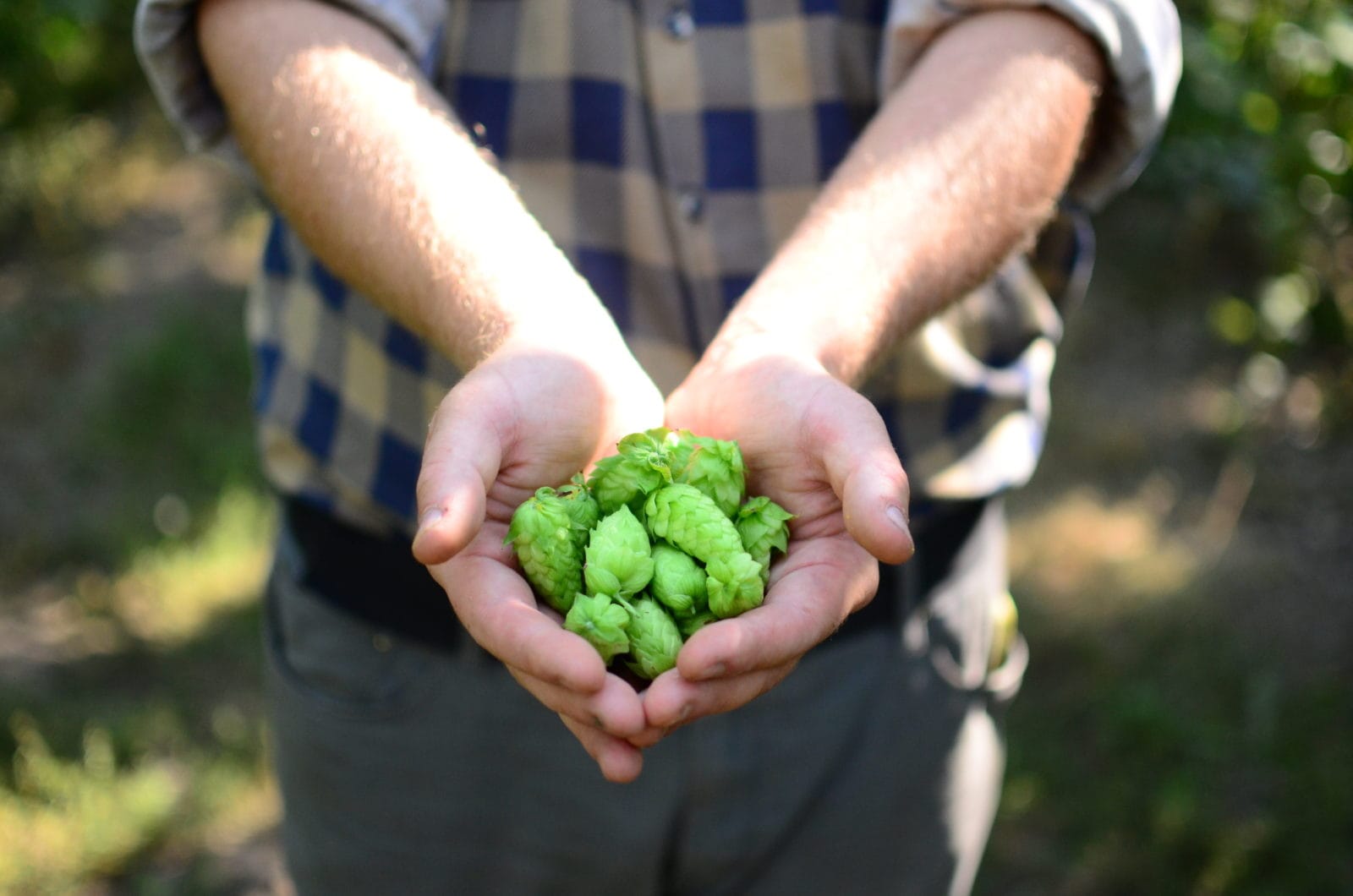
With the arrival of fall comes a surge of fresh hop beers from B.C.’s breweries. These special beers are available for a short window of time because they are brewed with freshly picked “wet hops” immediately after harvest. Normally, hops are dried and processed into pellets so that they can be shipped and stored for several months without spoiling. Instead, fresh hop beers must be brewed right after the hops are picked, usually the very same day, before the hops begin to spoil.
Wet-hopped beers showcase bright, grassy flavours and a distinctly fresh quality that is not present in dried hops. They should be consumed immediately because the volatile hop oils and flavour compounds break down quickly. Don’t plan on cellaring any.
The first fresh hop beer produced commercially in B.C. was Driftwood Brewery’s Sartori Harvest IPA, which dates back to 2009, making this year’s edition the 10th annual version. In fact, Driftwood brewed its first batch of Sartori before it ever brewed Fat Tug IPA. Co-founder Jason Meyer says it was on Driftwood’s to-do list right from the start.
“Unfortunately, we opened our doors a month too late so we couldn’t brew a fresh-hop in the first year, but I was trying to find a source for them right away,” he says.
The source he found was the Sartori Hop Ranch in Chilliwack. Rather than experimenting with different hops on an annual basis, Driftwood always returns to Sartori’s farm for the fresh crop of Centennial hops.
“Part of our commitment to the Sartori project is that we are exploring a single hop variety from a single plot of land,” explains Meyer. “We really want to celebrate the year-to-year changes that might occur.”
Driftwood sends a truck from its Victoria plant across the strait to pick up a load of hops immediately after harvest.
“There’s something ritualistic about going out there every summer,” Meyer says. “It’s a chance to reflect on life and the business and all that’s changed. I find it’s a time for reflection.”

The brew takes place first thing the next morning. Meyer loves seeing the reactions of his staff as they check out the hops. “Everyone walks out of the fridge with the same look on their face. It just fills the brewery with an amazing smell.”
Using fresh hops offers some brewing challenges. Because the wet hops have so much more moisture in them, a brewer has to use up to 10 times as many hops by weight to get the same amount of the flavour compounds, so there’s a lot more plant material in the brew kettle. Driftwood had to devise a screen to keep the hops from clogging up the plumbing. Afterwards, Meyer says the brewer has to climb inside the kettle with a bucket to scoop out the still steaming hops.
“Usually it involves stripping down to your knickers because it’s still so hot in there.” Because of this, “the new guy gets that job,” Meyer chuckles, “but actually they’re pleased as piss to brew the Sartori.”
Over at Category 12 Brewing in Saanichton, owner Michael Kuzyk is planning his second wet-hopped beer following last year’s Fresh Hop Saison, which he made with Cashmere and Opal hops from the Chilliwack Hop Farm. This time around he’s going to make a fresh hop pale ale with Sacch Trois yeast, the same strain the brewery uses in its Wild IPA, “which has a really nice, fruit-forward mango element to it.” The hops will be Centennial and Chinook varieties from the B.C. Hop Farm in Abbotsford. He also hopes to adopt a “cryo-hop” method to use some of the wet hops in the dry-hopping stage: “I’m going to use my science background and freeze it with liquid nitrogen.”
Dozens of other fresh hop beers will be released in B.C. this fall. Many breweries work with local hop farms. In Nanaimo, Longwood brews its 40KM ISA using ingredients sourced within 40 km of the brewery, including fresh hops from three different hopyards in Nanoose, Cedar and Yellow Point.
Other breweries go to extreme lengths. After attending the Great Canadian Beer Festival in Victoria on the weekend after Labour Day, Wheelhouse Brewing’s team stops in Chilliwack to load its truck with fresh hops. From there it is a 1,400-km drive home to Prince Rupert where they brew their 1000 Mile IPA. Not quite 1000 miles but close enough!
“Nowadays there are a couple hop farms closer to us, but we’ll stick with the one a thousand miles away because we’re gluttons for punishment,” co-owner Craig Outhet explains. “That and we’d have to change the name of the beer, and all the fresh hop puns are taken.”
Even though Dageraad Brewing doesn’t usually brew hop-forward beer styles, that doesn’t stop them from brewing a batch of Wet Hopped Blonde each year using Centennial hops. According to owner Ben Coli, the Sartori ranch “is one of the most beautiful farms in the world. This batch of beer is basically just an excuse to go out there and see the farm every year.”
Some brewers choose to use locally grown “wild” hops, sourcing them from backyards, homebrewers’ gardens, or wherever they can find them. Townsite Brewing works in this way to gather hops for its Timewarp wet-hopped pale ale.
And other breweries work with hop farms south of the border to source more unusual styles for their fresh hop beers. Yellow Dog Brewing in Port Moody will brew two different beers using wet hops from Yakima, Washington: Alpha Dog will feature fresh Citra, and Little Dog will feature fresh Mosaic.
Look for fresh hop beers to start showing up on store shelves and tap lists around the end of September.
• Get your fresh hop on at these upcoming events: B.C. Hop Fest, Sept. 29 in Abbotsford and Fresh to Death, Oct. 6 in Victoria.
Required drinking
Sartori Harvest IPA by Driftwood Brewery
Timewarp Wet-Hopped Pale Ale by Townsite Brewing
Alpha Dog Fresh Hop Pale Ale by Yellow Dog Brewing
Fresh Hopped Wild Pale Ale by Category 12 Brewing
Wet Hopped Blonde by Dageraad Brewing




